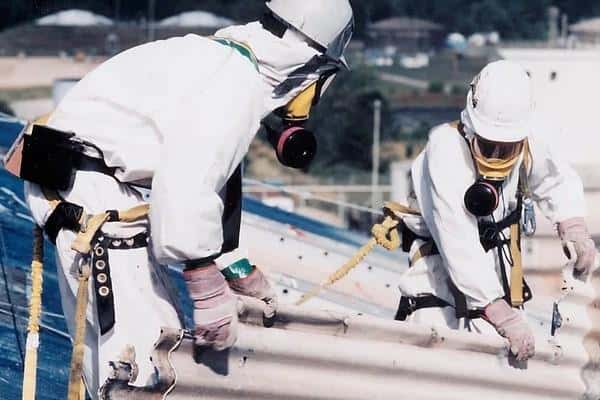
It is not every day you hear about Mesothelioma. It is a type of cancer that attacks the lining of the lungs or stomach, also called the abdomen. It’s not common but can be very dangerous. The alleged primary cause of this aggressive cancer is a material called asbestos, used when building houses but abandoned long ago because of the associated health risks. We’ll go through how asbestos and mesothelioma are related.
Definition and Types of Mesothelioma
Mesothelioma is a very specific kind of cancer. It starts in a layer of tissue that is quite thin, around your lungs, stomach (abdomen) or, sometimes, even the heart. There are three main kinds of this cancer:
Pleural Mesothelioma – It affects the lungs and is the most common.
Peritoneal Mesothelioma – This type grows in the tummy area.
Pericardial Mesothelioma – A very rare kind that affects the heart. To learn more about this cancer, take a look at this resource: https://www.asbestos.com/.
Mesothelioma is hard to spot. There is always some gap between the beginning of the disease and when you’re able to observe and identify it yourself. For example, symptoms like coughing, shortness of breath, and stomach ache are not particular to mesothelioma and can point to other normal diseases. That’s part of its danger.
What Is Asbestos?
It is a material made in a lab to be strong and nonflammable, meaning that it cannot easily burn. It was very common to see buildings and roofs made from asbestos. In fact, if you dig around enough, you’d find it in many household products you use today. The only difference may be that you will only find them in smaller quantities than before.
Here’s the catch: it isn’t bad at all until it’s disturbed. When disturbed, like through a power lift, it converts into tiny fibers easily able to float freely in the air. If a person breathes these fibers in, they sit inside their lungs and body. Over time, they keep damaging the tissues and cause scars and cancer.
Mesothelioma and Asbestos Connection
When it comes to the question of how mesothelioma develops, we know the answer is asbestos. It is not difficult to arrive at a plausible conclusion when it comes to understanding the connection between these two. Those tiny bits of fiber from disturbed asbestos float in the air and if you breathe them in, they stay in your body, sometimes for decades.
Bit by bit, they gradually harm the surrounding tissue. The presence of floating fibers is what leads to inflammation. This inflammation is a damage to the lung and other tissues around. It builds up over time, becoming deadly because it stays in the hard-to-handle part of the tissue.
The people who are most at risk are those who work around asbestos. This includes people who work in construction activities, factories, or shipyards.
Why Is Asbestos Still a Problem?
The damage doesn’t exactly end with simply breathing in asbestos. The fibers can also easily stick to clothes or skin. If someone works at such a place and comes home, their family and others around them can be at risk. The fibers will eventually detach from the skin and clothes, float in the air, and go into their lungs.
It’s now a general consensus in the world that it can be very harmful. As a result, many countries have banned it or simply put restrictions on its use. But the material was so common that its dust is still around in many buildings and homes.
How Can You Stay Safe from Asbestos?
Here are some simple ways to avoid it and stay safe:
Avoid Old Buildings: Asbestos was popular decades ago and some old buildings still hold some of the material. If you suspect something is or contains this dangerous substance in an old building, be sure to leave the place and call for professional help.
Don’t Touch It: If you see it in your house, let someone know or call a trained professional to remove it. It’s not safe for an untrained professional to get rid of it since there are special methods of disposing of the material to ensure its fibers don’t dislodge and pollute the air.
Wear Safety Gear: People who have to work with asbestos, like builders, insulation experts, and demolition crews, should wear protective clothing and face masks. Click here for more information on staying safe from this material.
Why Early Detection Matters
Mesothelioma can take many years to develop, even as long as twenty years after someone is near asbestos. If someone has breathed in asbestos and later has trouble breathing or experiences chest pain or tummy pain, they should see a doctor. When mesothelioma is found and treated early, doctors are more likely to help people with the disease.
Raising sufficient awareness about the dangers of exposure, as well as ongoing early detection efforts, can be extremely beneficial in the prevention and treatment of the disease.
Final Thoughts
The relationship between mesothelioma and asbestos shows an all too familiar narrative on the long term effects of the industrial age on public health. While there are, thankfully, much better regulations and awareness about the dangers today, their harmful effects still persist and will continue to impact people around the globe for years if there are no committed efforts to reduce these negative consequences.
Understanding the causes of mesothelioma is the first part of making the right decisions to push for the right kind of systemic change. Do you part to stay aware and make sure you stay safe and know the risks.

